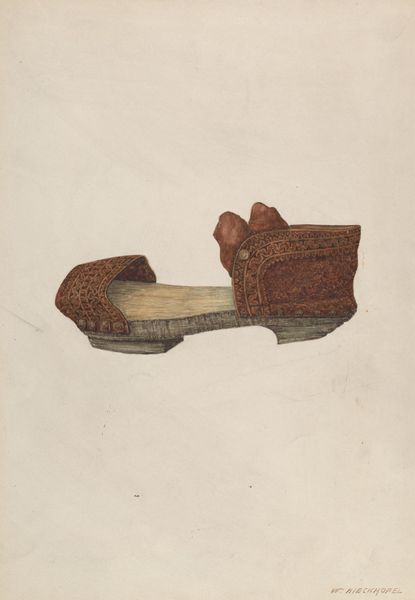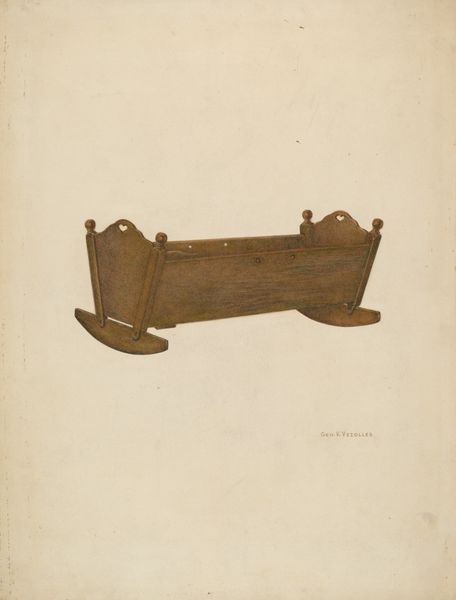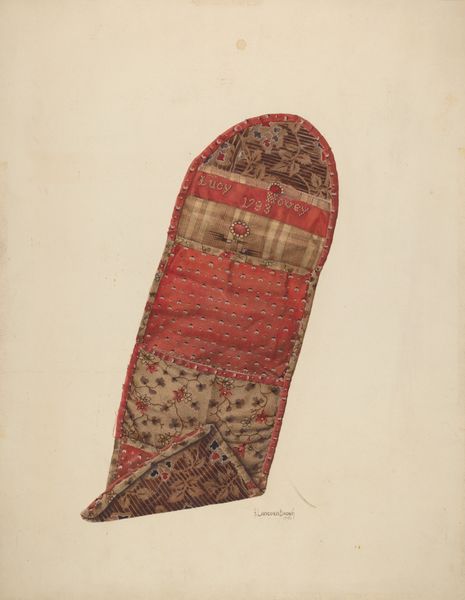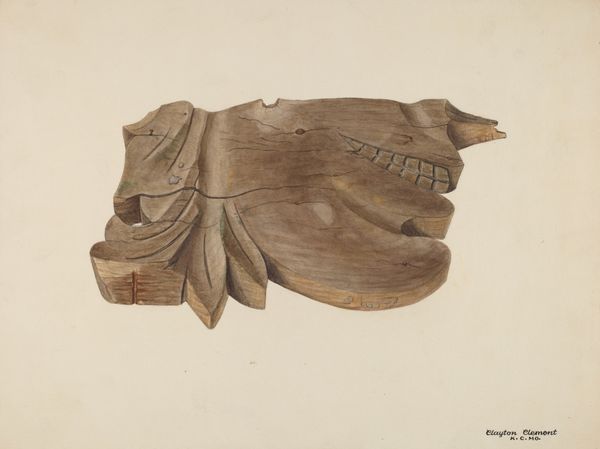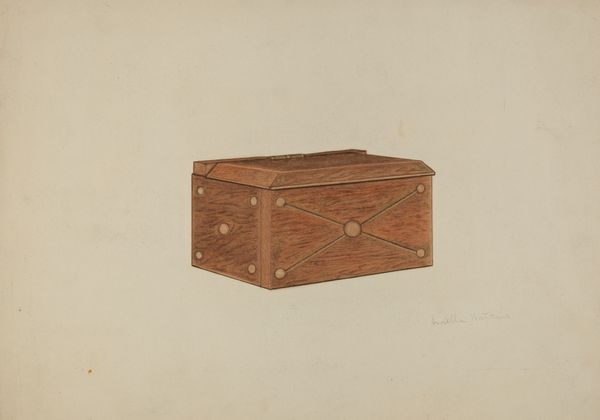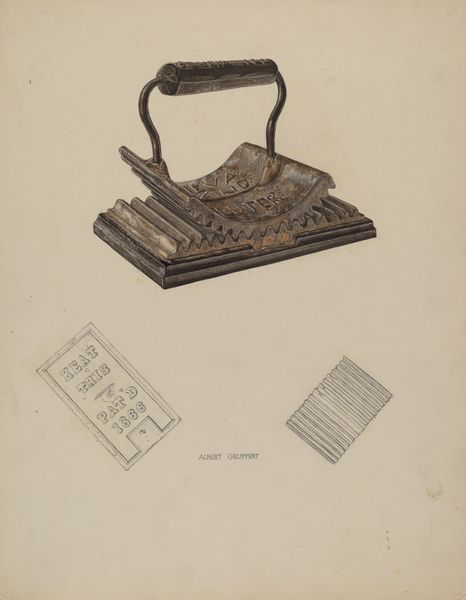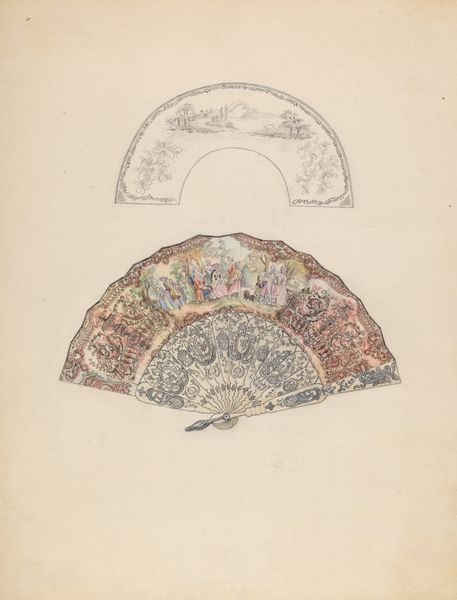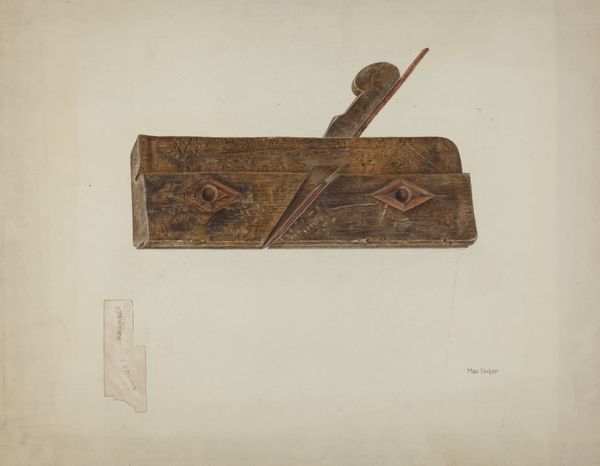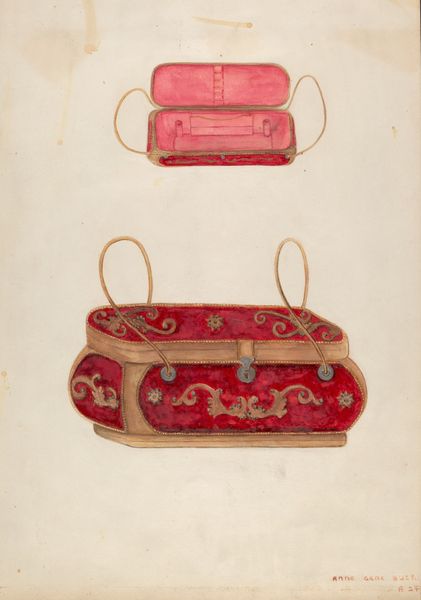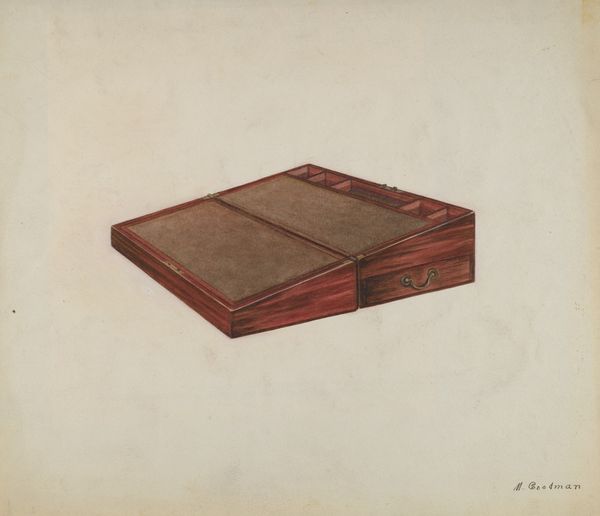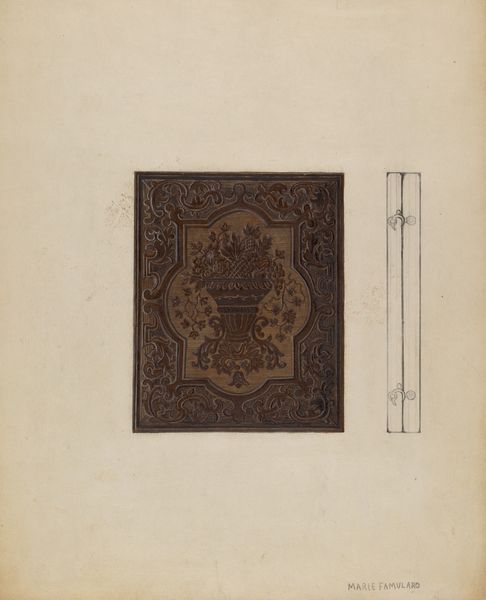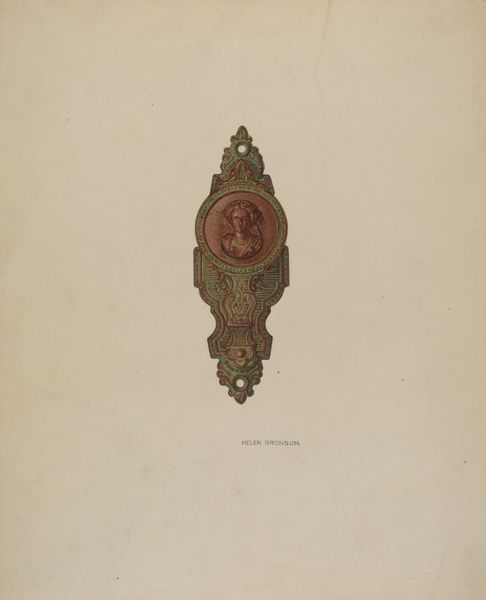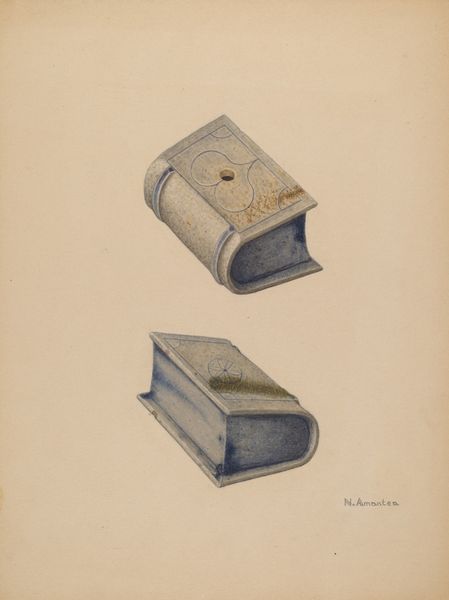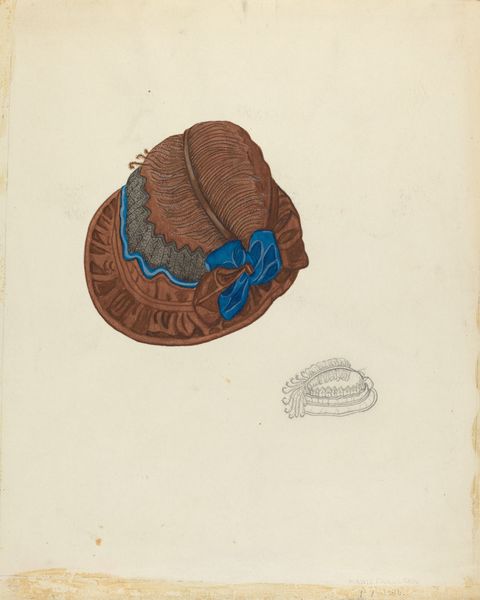
drawing, coloured-pencil, watercolor
#
drawing
#
coloured-pencil
#
watercolor
#
coloured pencil
#
watercolor
Dimensions: overall: 28.1 x 23 cm (11 1/16 x 9 1/16 in.) Original IAD Object: 3 1/4" wide; 5 1/2" long
Copyright: National Gallery of Art: CC0 1.0
Curator: Welcome. Here we have "Wallet," a watercolor and coloured-pencil piece from around 1936 by Hugh Clarke. What are your first impressions? Editor: It's understated. I'm struck by the detail, the artist seems to have had such an attention to it. There's a real tenderness here, almost like a portrait of a beloved object. I am also feeling melancholic. Curator: Absolutely. Consider the cultural context of the 1930s. The Great Depression cast a long shadow, shaping values and artistic sensibilities. An everyday object like a wallet, normally overlooked, gains significance as a symbol of economic survival, doesn't it? Editor: It does. This isn’t just a wallet, it's a document of lived experience. Its age and signs of use – rendered with care in the texture and color – are what grab you. How art could, and perhaps still does, assign dignity and agency to otherwise silent objects. Curator: Precisely! We often see Clarke's hand examining artifacts or personal effects. There’s a sense of elegy in capturing a lost time, a record of social and personal economies rendered just before the world changed. These were items from Clarke's collection so they are not presented dispassionately. Editor: So interesting! The artistic choices reinforce this. Watercolor creates a soft focus that sentimentalizes. What would it have meant for Clarke to focus his attention so minutely to it in his practice, to let it have a life in art? Curator: These objects are signifiers, embedded within a structure that upholds them, in this case the drawing on paper. By portraying this object, it is presented in conversation with ideas around value, poverty and precarity, allowing the artist to examine this relationship with care. Editor: Looking closer, this piece allows us to connect with lives from a moment in time. We can consider ideas around identity and class through the image. I am grateful for its insight. Curator: Indeed. Through art, Clarke allows us to engage in social critique of our cultural landscape then and now, but through a humble representation. Thank you for joining me to understand how artistic techniques shape historical contexts! Editor: Thank you! This piece encourages conversations that promote access and intersectional knowledge within society, one object at a time!
Comments
No comments
Be the first to comment and join the conversation on the ultimate creative platform.
